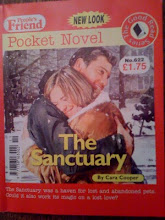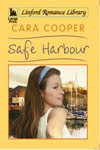I'm addicted at present to
Michael Hauge's excellent book on writing screenplays because there's a lot which can be applied to story writing generally. As I am halfway through my first mainstream novel attempt, analysing what makes a story successful has become a bit of an addiction with me. Last night we went to see
'The Way, Way Back' starring
Steve Carrell (this time uncharacteristically in a bit of a bad boy role) and
Toni Collette. So I thought I'd see how this new film about a fraught family holiday to the seaside shaped up against Hauge's writing tips. Please beware, for anyone who hasn't yet seen the film, there are spoilers here!
1.
The primary goal of any filmmaker is to elicit emotion in the audience. Box certainly ticked here, it's a movie about families, first love, the pain of adolescence, need I say more!
2.
Hollywood movies (and it's the same with popular novels)are about characters pursuing visible goals with clearly defined finish lines. Top marks here as the main character Duncan (a painfully shy teenager) has the clear visible goal of surviving a family holiday even though his mother's new boyfriend the overbearing and judgemental Trent (his nemesis) is on board and clearly out to establish his power over the family.
3.
There are five compelling elements that will increase the commercial potential of your story these are: to win; to stop; to escape; to deliver and/or to retrieve. The Way, Way Back does tick quite a few of these in that Duncan wants to win his mum's love and loyalty, he wants to stop her relationship with Trent, he wants to escape from a grim family holiday and possibly to retrieve his parents' ruined relationship.
4.
Character arc. There are a number of clear character arcs here. Duncan gains the confidence to say what he wants and be heard. His mother, Pam, decides not to be treated like a doormat - during the middle of the film she says she is prepared to put up with Trent's infidelity because she is scared of losing him but by the end she visibly goes to sit by her son, thus siding with him and risking Trent's disapproval. The character Owen, played by Sam Rockwell who is a wisecracking dude, opens up to Duncan and shows his serious side in order to help Duncan overcome his problems. Susanna and Peter, the next door neighbours kids although smaller players in the drama both change. Susanna who has risked staying with a bitchy bunch of friends, breaks away and establishes her own self and Peter her brother who is somewhat under his mother's thumb runs away to join Duncan on his adventure at the water park and is given confidence by Owen, the manager there who is mentor to both the boys.
5.
Theme - the theme of the story is encapsulated in the title. It's about not being pushed around. The Way, Way Back I understand is the name for the back seat of a Buick which is where poor old Duncan sits on his own, pushed back there by the overbearing Trent. The beginning scene of the book has him sitting there looking forlorn and being picked on by Trent who viciously asks him to rate himself on a scale of one to ten. When Duncan modestly says he might be a six, Trent rates him a three and taunts him to do better. The last scene of the film still has Duncan in the back but by then he has won his mother's loyalty and she goes to sit in back with him thus demonstrating that he has achieved the visible goal of trumping Trent and showing him up for what he truly is - a bully.
6.
The three essential methods for creating immediate empathy with your hero are: 1) sympathy - a victim of undeserved misfortune. Duncan is definitely this in that his mother has chosen someone who is deeply unsympathetic to his needs.
2) Jeopardy - in danger of losing something of great value to the hero - Duncan right from the start is in danger of losing his mother's loyalty.
3) Likeability - possessing one or more of the following qualities, kind, good hearted and generous, well-liked and funny. This one's more difficult. We do feel sorry for Duncan but he's awkward, no one seems to like him much, he's oppressed - however, because he is so young, we give him a chance. Many teenage boys are introverted and uncomfortable, the hope is that they will overcome their ugly duckling status and turn into adult swans. Overall I think Duncan's better qualities come out in him as the story develops. Right from the start, you are willing for him to turn out to be a nice guy which, of course, by the end he is. Part of the reason for the viewer to stay with the story is to watch this capacity in him to be liked and loved unfold. The key scene in us realising this goal has been reached is when the beautiful next door neighbour Susanna kisses him. If someone that lovely can want him, we know he must be a good guy.
7. Ground rules for creating primary characters are that there should be a hero (the main character whose motivation drives the plot and with whom we most closely empathise) - we have that in spades with Duncan, a nemesis (the character who most stands in the way of the hero achieving their outer goal). Trent is a clear nemesis, if we look at Duncan's visible goal which is to survive a family holiday with his pride in tact, Trent is the one who is most likely to scupper that. Then we have a character who should be the Reflection (the character who most supports the hero's outer motivation). This is clearly Owen, the manager of the water park. He is the one to whom Duncan runs to find some relief from his awful home life and it is Owen who shows the boy that he can face danger and come out on top. The key scene here is where Owen sends Duncan in to tackle a group of kids who are breakdancing in the water park and gathering a crowd and who have to be stopped. Duncan is petrified, and when the group challenge him to show them his moves he rises to the challenge. They accept him and he gains visibly in confidence. The other key scene is when a trio of kids get stuck in one of the water rides. Instead of doing the sensible thing, Owen, who is a risk-taker and bucks authority decides to clear the blockage by sending another, heavier kid zooming down the water slide to flush them out like peas popping out of a pea shooter. Clearly this is a pretty dangerous thing to do (and Owen gets told off for it by his sensible employee, Caitlin. Nevertheless his high risk strategy does the job thus demonstrating to Duncan that being brave, even if it also might be foolhardy can win the day. Seeing this helps Duncan to take risks and 'out' the philandering Trent in front of everyone at a party. Clearly a high risk strategy which has fallout but in the end, works.
We enjoyed the film and I have found that analysing it against
Michael Hauge's great book, 'Writing Screenplays that Sell' has been really useful in helping me develop my own story. Now, enough of this procrastinating, back to writing my own novel......
 . He plays some fantastic characters in his films and from the little I read about him he seems like a nice guy. So, he or rather someone in his image will be one of my next characters.
I have had a busy time lately, going to the launch of a friend, Alison Morton's book, Perfiditas which is the second in her series about Roma Nova, an alternative world based on ancient Rome but operating in the 21st century. This photo is of Alison talking about her characters. It is I am sure a rollicking good read and Alison REALLY knows her stuff about the Romans, the Latin language etc. She's also a lovely lady with some super friends who I chatted to at the launch. I can't wait to read Inceptio and Perfiditas.
. He plays some fantastic characters in his films and from the little I read about him he seems like a nice guy. So, he or rather someone in his image will be one of my next characters.
I have had a busy time lately, going to the launch of a friend, Alison Morton's book, Perfiditas which is the second in her series about Roma Nova, an alternative world based on ancient Rome but operating in the 21st century. This photo is of Alison talking about her characters. It is I am sure a rollicking good read and Alison REALLY knows her stuff about the Romans, the Latin language etc. She's also a lovely lady with some super friends who I chatted to at the launch. I can't wait to read Inceptio and Perfiditas.  Well, that is a little update. I have also just submitted a 3 part serial to Woman's Weekly and am awaiting the verdict on whether they do or don't wish to buy it. Needless to say I am checking my e-mails every two minutes and it is driving me potty. If they do, I'll be jumping up and down in the street!! Just to air what it is about, it's crime and romance again (that heady mix). To sum it up in a sentence or two I would say, 'what would you do if you found a buried stash of money, ill-gotten gains, dirty money? Would you turn it in to the Police? But what if your daughter was facing disaster and the only thing to save her would be some of that 'lost' money? Erica McAdam has to make a decision that will change her life forever.....' I do hope they accept it because I loved writing it! I shall report back...... Goodbye for now.
Well, that is a little update. I have also just submitted a 3 part serial to Woman's Weekly and am awaiting the verdict on whether they do or don't wish to buy it. Needless to say I am checking my e-mails every two minutes and it is driving me potty. If they do, I'll be jumping up and down in the street!! Just to air what it is about, it's crime and romance again (that heady mix). To sum it up in a sentence or two I would say, 'what would you do if you found a buried stash of money, ill-gotten gains, dirty money? Would you turn it in to the Police? But what if your daughter was facing disaster and the only thing to save her would be some of that 'lost' money? Erica McAdam has to make a decision that will change her life forever.....' I do hope they accept it because I loved writing it! I shall report back...... Goodbye for now.



















